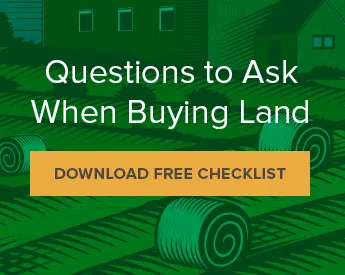Veggies to Grow In Summer + Tips for Gardening in Hot Climates

Think you can't garden in the South past May? A veteran gardener and survival expert shares the best veggies to grow in summer, plus essential tips on growing and maintaining a bountiful Southern garden all summer long.
Gardening in the south is usually a spring or early summer affair.
Once the hot weather arrives, many species of vegetable plants begin to wither and turn brown. It is easy to become discouraged and think that gardening is over until the cooler fall weather arrives.
However, there are a few tips that will help you adapt to the hot conditions and still be successful in your gardening endeavors.
5 Controllable Elements To Harness For Successful Hot Weather Gardening
Your best defense against a rotten, dehydrated, mildewy and diseased summer garden is to control the elements as much as you can reasonably control.
1. Plant Selection: The Best Veggies to Grow in Summer
The astute gardener will need to select vegetable varieties that are less susceptible to high temperatures.
The following species are some of the best veggies to grow in summer/hot climates:
- Tomatoes
- Melons
- Okra
- Cucumbers
- Beans
- Squash
- Peas
- Eggplant
- Corn
- Potatoes
When selecting plants, consider their nature and heat resistance to hot weather. Susceptible species may need to be planted earlier to avoid the high temperatures.
While tomatoes grow well in hot conditions, the bright sun can cause sun scald and damage to the skin and the outer part of the tomato.
This brings us to the next solution to hot conditions.
2. Shade
If possible, the use of shade cloth can alleviate some of the negative effects of the hot sun.
The goal in using shade cloth is not to completely block out the sunlight, but to minimize it to avoid damage to the vegetables.
A quick search online can reveal a wide variety of shade cloths and a significant range of prices. Select one that is durable, has grommets strategically placed for easy installation and that is configured to fit your particular space and needs.
A good method for installation is to use T-posts that can be driven into the soft garden soil. These can be removed and used numerous times.
Be sure to allow enough headroom to walk beneath to till and harvest vegetables comfortably.

3. Water
Water is essential when practicing hot weather gardening.
The water soaks directly into the soil, rather than spraying into the air from sprinklers, which causes a high evaporation rate, as well as contributing to mold and bacterial growth. In addition, some vegetables do not respond well to a direct water application.
There are several things to keep in mind when watering in hot weather:
- Drip systems are a good alternative and are definitely better than sprinklers, but are more difficult to set up.
- Water until soil is wet to a depth of at least one inch. When using soaker hoses, it may take as long as a couple of hours to soak the soil to a one-inch depth.
- Water early or late in the day to prevent evaporation.
- During extremely hot times, consider watering twice daily.
- Round soaker hoses are usually better than flat ones and are more durable.
- If soaker hoses have small holes that release the water, turn this side down. My experience is with hoses that “weep”, so this is not possible.
Check out this link for more details on the use of soaker hoses.

4. Mulch Liberally
A good way to conserve water and keep the soil beneficial to plants in hot weather is to apply 2-4” of mulch. Not only will this conserve water, but it will discourage weeds and make the garden maintenance easier.
Related reading: How A Soil Scientist Creates A Low-Maintenance Garden in the South
Final Thoughts on Hot Weather Gardening
A few common-sense tips or good habits for hot weather gardening are listed below:
- Avoid placing stone or concrete borders near vegetables, as these are natural “heat sinks” that will contribute to damaging the plants.
- Space plants far enough apart so they will not compete for water.
- Keep the garden weeded, as these can soak up precious water needed by the vegetables.
- Harvest vegetables as soon as they mature. Ripe and mature vegetables place higher demands on available water and nutrients.
- Minimize the application of fertilizers in hot weather.
- Container planting for some species is a consideration. During excessively hot periods, these can be moved to shady spots.
- Be sure to protect yourself, too! Overheating is a real risk and can sneak up on you.
- Try to limit your gardening time to the cooler parts of the day, morning and evening, wear sun protection, such as a hat and sunscreen, stay well-hydrated and take breaks to cool down as needed.





.jpg?width=100&height=100&name=IMG_1638%20(2).jpg)





Your email address will not be published. Required fields are marked*